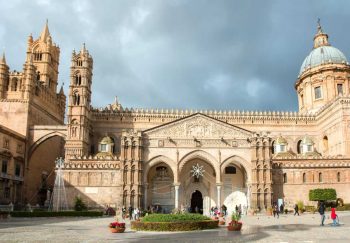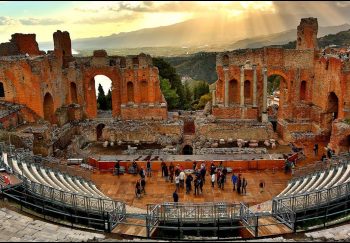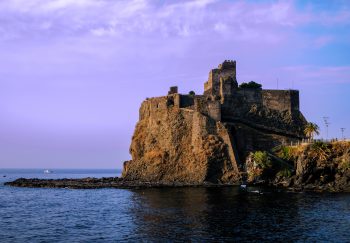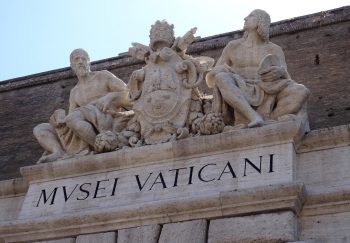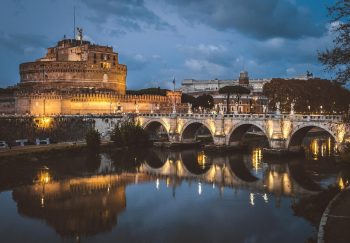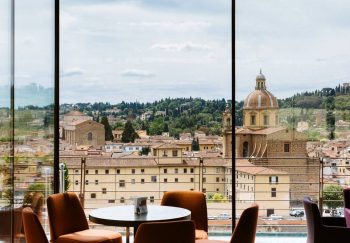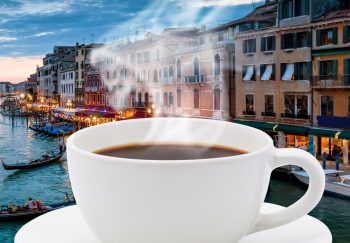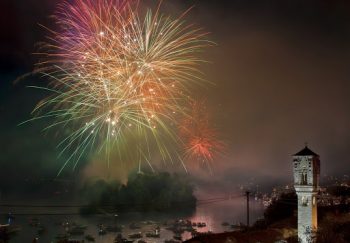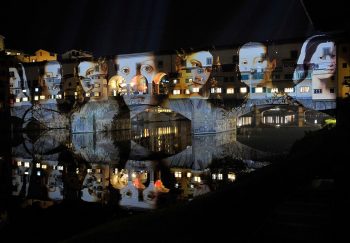Continue northward, past the Church of San Domenico. Take the via delle Orfane (left of the prospectus), until you reach a large square where the majestic cathedral rises. This Norman-Gothic-style temple was founded by Bishop Gerlando at the end the XIX century. It has been enlarged and rebuilt several times since then, with the exception of its original structure and the magnificent mullioned windows on the right. The facade can be accessed via a long, simple staircase. It is flanked on the right by the stunning XV Century belltower, which has two sets of blind, Gothic–Catalan mullioned Windows and a window with a balcony that is decorated beautifully by a pointed arch.
The interior is shaped like a Latin Cross and has three naves separated by pointed arches that stand on octagonal columns. It also features a magnificent wooden ceiling with rich stuccoes. To the right is a small chapel dedicated to San Gerlando. It is topped by a Gothic portal and contains the Arc a 1639 relic. The Chapel De Marinis is located in the left-hand nave. The right apse houses a 1495 marble Madonna with Child group and many other grave monuments that enrich this magnificent monument’s interior.
The Cathedral Treasure is of outstanding importance. It contains many works of historical and artistic significance, including the famous Sarcophagus Of Phaedra. This stunning, elegant, marble-based Roman work was created in the III century A.D., inspired by the V Century Greek style. This masterpiece, which is currently kept in the Church of San Nicola, depicts some episodes of the myth of Phaedra, and Hippolytus. It was praised and described by all great foreign travelers to Sicily during the XVIII Century, from Riedesel and Bartels. The Episcopal Seminary is located opposite the cathedral in the same square. It was founded in 1574 by Bishop Narullo and completed in 1611. The interior features a large, elegant porticoed atrium and two loggias.
An oddity: The Cathedral archives contain a singular and somewhat mysterious document: The devil’s Letter, a XVII-century manuscript written in unintelligible characters and addressed to a nun.
